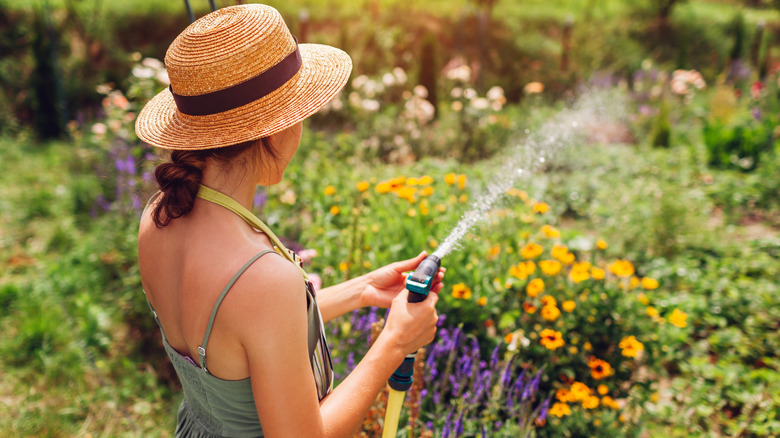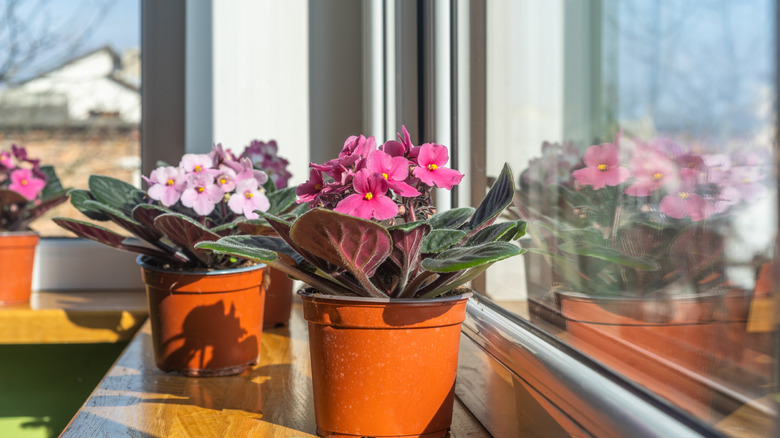Houseplants That Don't Like Being Brought Outdoors
Many houseplant enthusiasts like to give their plants a spell outdoors during the warmer months. While there are plenty of benefits to moving your houseplants outdoors in the summertime, and this is fine for many species, you do want to think carefully before you decide to do this. There are certain indoor plants that won't appreciate just being taken outside and left there. The soft indoor light is very different from the bright sunlight that warms your garden, and the transition can often prove too much of a shock for your delicate indoor plants.
You see, many popular houseplants originate from tropical regions and grow naturally among the undergrowth of lush rainforests. This means they're ideally adapted to low light conditions, and exposing them to full sunlight will cause their leaves to burn, become brittle, and drop off. There are also some plants that really shouldn't be placed outdoors, such as African violets (Streptocarpus spp.) These delicate species with their furry leaves don't respond well when moisture hits the foliage, especially if they're exposed to rainfall or morning dew. But if you do want them to enjoy some time in the fresh air, just make sure that you place them under cover.
Houseplants need careful thought before moving them outdoors
When you're looking at your collection of houseplants and deciding which ones you can safely move outdoors, take particular note of their light and temperature requirements. Most indoor plants should be placed in a shady spot outside, especially when first transitioning them. Plus, you want to introduce them to the changed conditions slowly by only putting them out for an hour or two on the first day and then gradually increasing the time they're spending outside over a period of one to two weeks. This is how you harden off plants to get them used to the different environments. The outdoor temperature also plays a key role in deciding which plants you can move outdoors.
For example, the popular moth orchid (Phalaenopsis spp.) needs warm, humid conditions with temperatures above 65 degrees Fahrenheit. Unless you can guarantee this, it's best to keep your moth orchid indoors. As a general rule of thumb, you should wait until nighttime temperatures are consistently over 60 degrees Fahrenheit before moving any houseplants outdoors for the summer. Another plant you probably shouldn't move outdoors is the weeping fig (Ficus benjamina) because it literally hates being moved at all and will respond by dropping most of its leaves. The most vital thing to remember is potted plants put outside may need more regular watering. Make sure you check them daily and give them a drink if the potting soil is dry. So, even if you have houseplants that you barely need to water indoors, these may need additional moisture when left outside.

